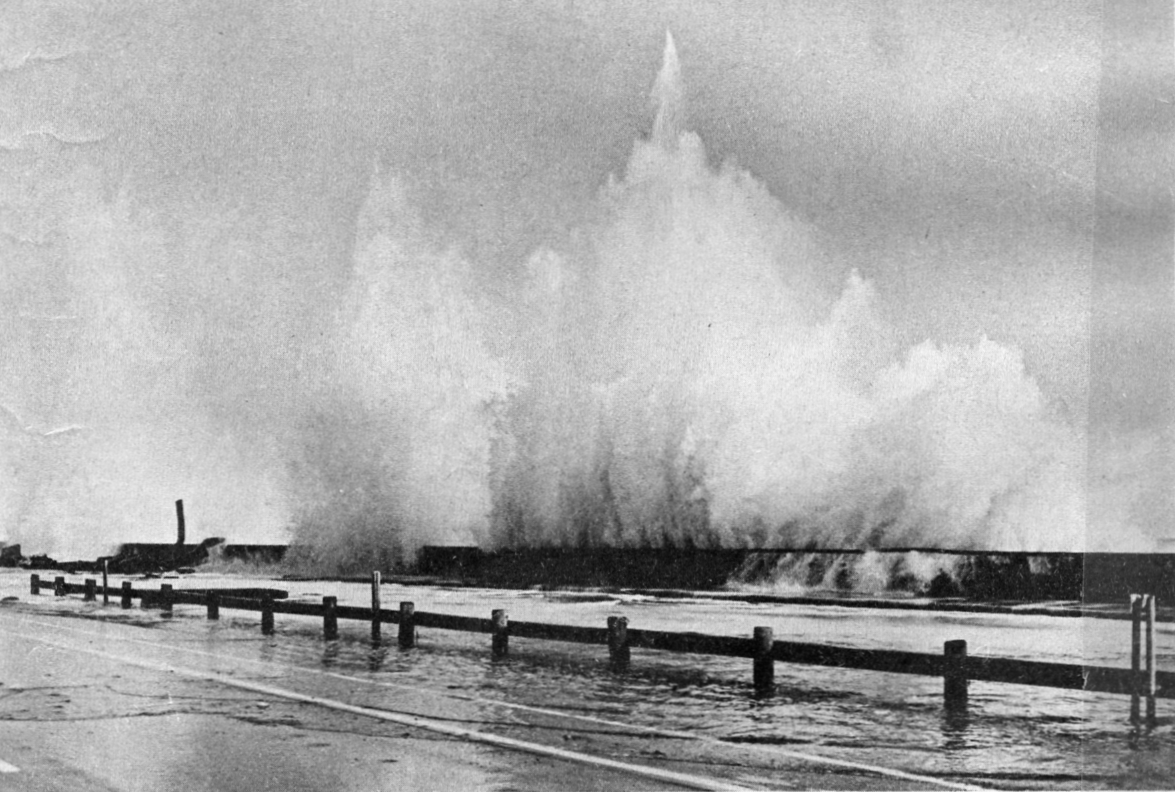Altruism and heroism marked the day
By Susan Morse, Seacoast Sunday, February 3, 2008
[The following article is courtesy of Seacoast Sunday and Seacoast Online.]
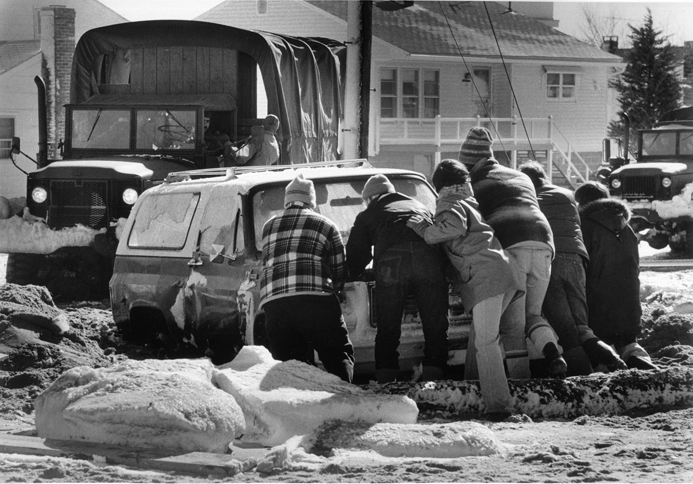
Thirty years after it hit, the Blizzard of '78 remains the worst snowstorm in New England memory.
The storm was a nor'easter that formed on Sunday, Feb. 5, 1978, came up the coast, and stalled. People remember large flakes of snow falling for three days straight.
Forecasters predicted a snowstorm, but on Monday morning, Feb. 6, 1978, it was business as usual for most commuters, according to Michael Tougias of Franklin, Mass., author of "The Blizzard of '78."
By 10 a.m., the first snowflakes arrived in full force, quickly burying cars.
What's amazing about most people's stories of the storm is that they recall the event not as a disaster, but as among the best times of their lives, when people walked, helped each other, and time stood still.
In all, up to 55 inches of snow fell in some areas, primarily between the morning of Feb. 6 and the evening of the 7th. Massachusetts was hard hit. Commuters were stranded on the highways; there were massive power outages; houses washed into the ocean; and there were 75 deaths attributed to the storm, including five men who perished aboard the Can Do, a pilot boat that sank as it tried to help a Coast Guard vessel.
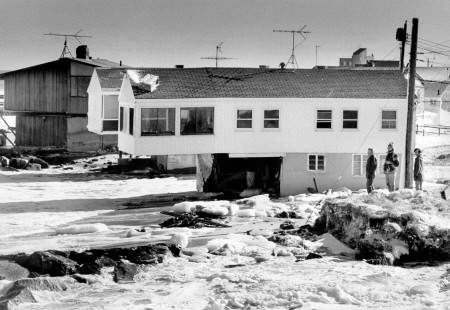
Bill Cavanaugh of Dover Point was then a 21-year-old with the Coast Guard in Gloucester, Mass.
"Most people remember cars stuck on Route 128," Cavanaugh said. "They had no clue as to what was going on just off the coast. I lost a few good friends at sea that night."
Cavanaugh, who lived in Marblehead at the time, had just gotten off duty and was home when the storm struck. The Gloucester station called him back in. A 44-foot Coast Guard vessel had run aground going out on a Mayday call for the tanker Global Hope that was anchored in Salem Sound and taking on water. Cavanaugh, who drove a Gremlin, got back to Gloucester by riding with the town snowplow drivers, he said.
He and a crew went out aboard a 41-footer. He described the conditions in the harbor this way: "You go stand in front of a three-story building, look at the roof, imagine it moving at you 40 to 50 mph, add 100 knots of wind, and ... put a blindfold on."
They couldn't make it out of the harbor and turned around after they heard the 44-foot boat was free and limping into Beverly Harbor. The Global Hope was also OK.
Capt. Frank Quirk, a friend of many at the local Coast Guard station, had also headed out aboard the 47-foot Can Do. The pilot boat had made it out of the harbor when Quirk heard the 44-footer was safe.
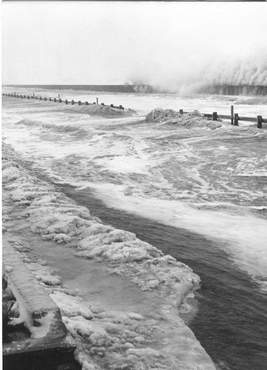
"Can Do attempted to come about," Cavanaugh said. "When it made the turn, the boat was disabled fatally. They took a heavy sea which disabled radar ... the mast came crashing down. All they had was a hand-held radio. We were able to listen to the Can Do until their final demise. The ship eventually lost power. We had to listen helplessly, there was not a lot we could do. (The Coast Guard) got a 210-foot cutter under way out of Provincetown, but there was no way it could reach them in time."
Tougias found out about the Can Do in his research on the blizzard. He has since written "Ten Hours Until Dawn: The True Story of Heroism and Tragedy Aboard the Can Do" that is now being written as a screenplay.
"There's live recordings up until the end," Tougias said. "(The crew) is incredibly calm and just trying to do the next right thing to stay alive. Their bravery and calm methodical manner, you listen with admiration."
Capt. Quirk, Charlie Bucko, a former Purple Heart Marine, Kenny Fuller, Don Curley and Don Wilkinson, all from Massachusetts, died aboard the Can Do.
"If the same incident happened today," Tougias said, "it would make headlines in every newspaper in New England. Five men died trying to help the Coast Guard."
Alan R. Earls, a Boston author, has also written a book about the storm titled, "The Great Boston Area Blizzard of '78." The book came out last month from Arcadia Publishing, which has a regional office in Portsmouth.
"I think the blizzard was different from the other major storms of the 20th century in two ways," Earls said. "First of all, it was the first really big storm to hit the region in almost a full generation — one would have to go back to probably Hurricane Carol in the mid-1950s for anything remotely comparable.
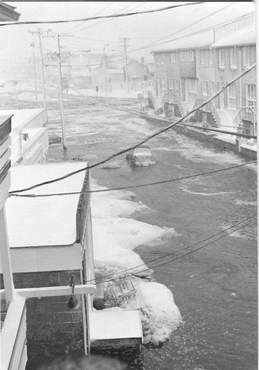
"Second, because of the snow itself and the driving ban that followed, the storm had an unprecedented impact on the lives and daily habits of millions of people. By comparison, even the 1938 hurricane, judged by some experts to be in the 'once every 300 year' category of storm, did not prevent people from starting to piece things back together the next day."
Chuck Pierson, 53, of Barrington, was a Hampton police officer in February 1978. Ashworth Avenue was under water, he said, along with the police station there. The dispatcher was wearing hip boots to keep on dispatching. In the height of this, he said, there was a fire at a Hampton Beach hotel, and the ambulance got into an accident with a large truck.
"It tore open the side (of the ambulance) like a can opener," Pierson said. Everyone was OK. We were trying to transfer people to another ambulance in a raging snowstorm. I cannot recall a storm like that; it was literally tearing the seawall apart of (North Beach) of Hampton Beach."
Gregg Champlin, the state's natural hazards specialist and an authority on hurricanes, was in St. Thomas at the time of the biggest snowstorm in recent New England history.
When will the next one hit? he was asked.
Of course, it's an event impossible to forecast.
"It just goes back to the point," Champlin said, "if it happened before, it will happen again."

